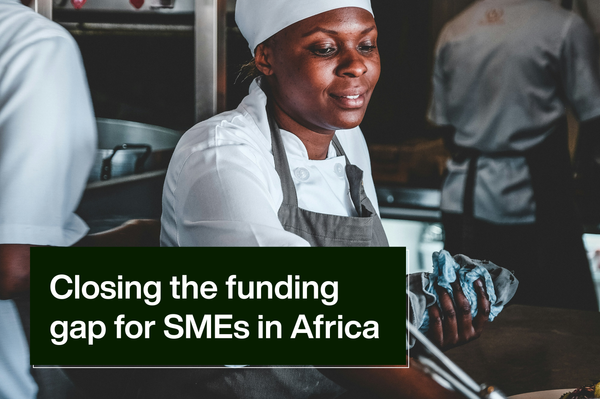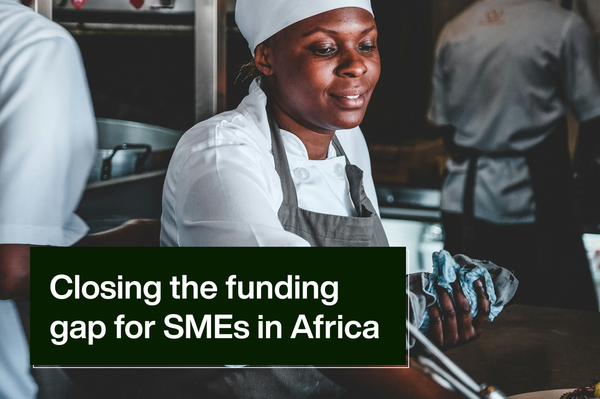Breaking Down the Value Chain of Embedded Finance
Embedded finance relies on a structured process that ensures seamless financial integration across digital platforms.

Everything is evolving, and B2B platforms and marketplaces are no exception. As competition heats up, businesses are constantly looking for ways to stand out and provide more value to their customers.
One of the most transformative shifts in recent years has been the rise of embedded finance—a game-changer that enables companies to integrate financial services directly into their platforms.
But what exactly makes this system work? Understanding the value chain of embedded finance helps break down the key players involved and their roles in enabling this ecosystem.
The Embedded Finance Value Chain
At its core, embedded finance relies on a structured process that ensures seamless financial integration across digital platforms. This value chain comprises four main categories:
- Capital Providers
- Infrastructure Providers
- Distributors
- End Users (Merchants & Businesses)
Let’s explore each component and how they contribute to the embedded finance ecosystem:
Capital Providers – Financial Backers
Every financial system needs a source of capital. In the embedded finance value chain, capital providers are regulated financial institutions—such as banks, neobanks, and lending institutions—that supply the funding for financial services embedded within digital platforms.
These institutions ensure liquidity and compliance, making it possible for businesses and merchants to access financing options such as embedded lending, BNPL (Buy Now, Pay Later), and working capital loans. Without them, embedded finance simply wouldn’t exist.
These institutions ensure liquidity and compliance, making it possible for businesses and merchants to access financing options such as embedded lending, BNPL (Buy Now, Pay Later), and working capital loans. Without them, embedded finance simply wouldn’t exist.
Infrastructure Providers – Technology Enablers
Infrastructure providers are the connective tissue of embedded finance. They develop the APIs, platforms, and underwriting models that power financial services behind the scenes. Whether it’s facilitating seamless payments, lending, or insurance, these companies ensure that non-financial platforms can integrate financial services effortlessly.
Distributors – Digital Gateways
By embedding financial services such as credit, payments, and insurance directly into their platforms, distributors make it easier for businesses and consumers to access financial products without ever leaving the digital environment they’re already using. This seamless experience enhances customer retention, improves user engagement, and drives higher transaction volumes.
End Users – Digital Platforms and their Merchants
At the end of the value chain are the businesses and merchants—the SMEs, startups, and entrepreneurs that rely on embedded finance to operate and grow.
For many small businesses, accessing capital through traditional financial institutions is slow, restrictive, and full of red tape. Embedded lending changes that by offering financing solutions that are:
✅ Faster: Approval processes are streamlined through automated risk assessments.
✅ More Accessible: Loans and credit lines are offered within platforms businesses already use.
✅ More Flexible: Terms are often better suited to SME needs compared to traditional banks.
With embedded finance, merchants don’t just get capital—they get a frictionless financial experience tailored to their operations.
Why Understanding the Value Chain Matters
Embedded finance is growing rapidly, with Africa’s fintech ecosystem poised for massive expansion. By breaking down the value chain, we can see how collaboration between capital providers, infrastructure developers, distributors, and end users is shaping the future of financial services.
As embedded finance continues to evolve, businesses that embrace this ecosystem will drive more revenue, improve user experiences, and stay ahead of the competition.
About Salad Africa
Salad Africa is a fintech startup providing plug-and-play credit infrastructure that enables digital platforms—such as SaaS platforms, and marketplaces—to offer embedded lending to their SME customers.
Our infrastructure also includes a lending-as-a-service platform that allows banks to underwrite and finance credit requests efficiently. By bridging the gap between financial institutions and underserved businesses, Salad is improving access to credit in emerging markets.
At Salad, we believe that access to credit should be seamless and inclusive. Our team is building infrastructure that enables digital platforms, SMEs, and banks to unlock diverse financial opportunities.




